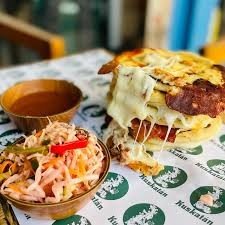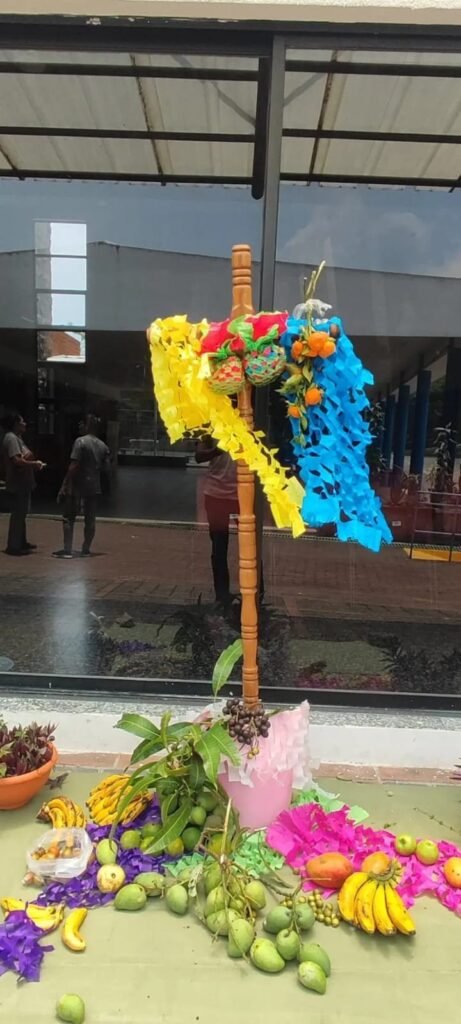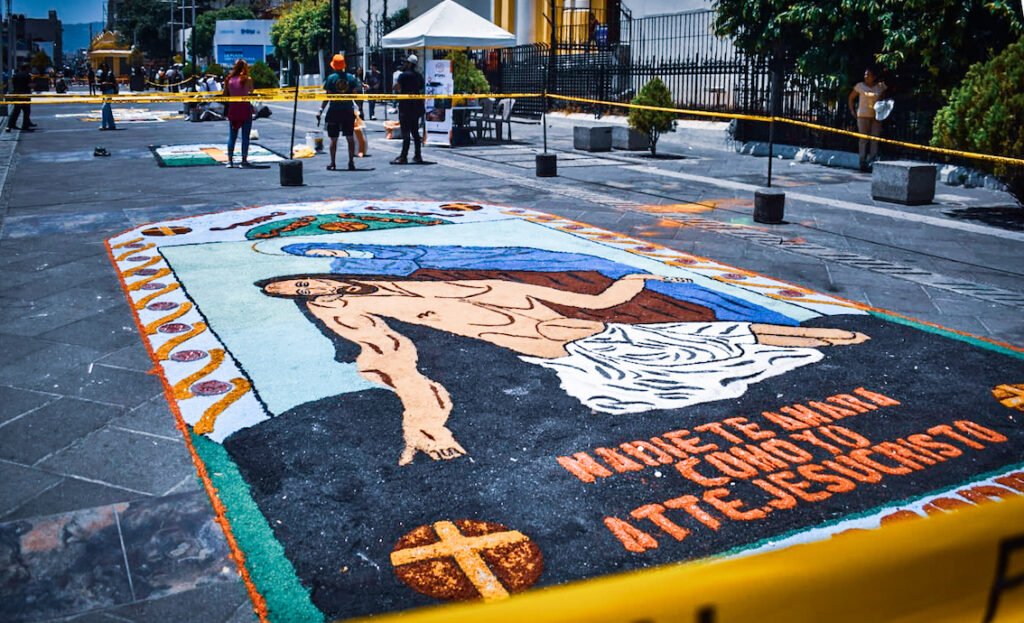HISTORIES AND TRADITIONS
EL SALVADOR
Some of the most important traditions of San Salvador

Holy Week carpets
Atol is a pre-Hispanic
Decorating the gardens on the Day of the Cross
Pupusa Sundays
Some of the most important traditions of San Salvador
- Dance of the Painted Bull
- Pupusa Sundays
- Decorating the gardens on the Day of the Cross
- Holy Week carpets
- Drinking atol in the afternoons
There are many customs and traditions. These five stand out for their significance and the joy they bring to both locals and foreigners who want to learn a little more about San Salvador’s culture.

Danza del Torito Pinto
The other participants in this dance stand in a circle, and the person wearing the mask dances in their midst as if chasing them. To the beat of the music, the bull imitates the animal and performs various pirouettes. This dance can be seen at some events that take place in the city or in the large parks of San Salvador during festive events.
This folk dance dates back to the Spanish conquest. It is a performance that blends rituals and traditions of Mesoamerican origin with parts of Spanish culture. In this dance, a person dons a giant mask shaped like a bull.
One of the most popular customs in San Salvador is eating pupusas on Sunday nights with the family
Domingos de pupusas


Because life without pupusas is no life for Salvadorans, and every foreigner who tries these delicacies usually agrees. Whether they’re corn or rice pupusas, with cheese, beans, scrambled eggs, or pork rinds, everyone ends up delighted. This dish is so important that it even has a special day for it: National Pupusa Day. It’s celebrated on the second Sunday of November. One of the best places to eat pupusas with your favorite ingredients is in Antiguo Cuscatlán, where there’s a wide variety of pupuserias.
Decorar los jardines el Día de la Cruz
Every May 3rd, one of the traditions of San Salvador is to decorate a cross placed in the garden with flowers, fresh fruit, and colorful papers. People gather around the cross to pray or simply cross themselves. This celebration heralds the beginning of the rainy season and, with it, the growing season, which is considered a gift from the earth. It is a religious and spiritual holiday, and its uniqueness is what draws the attention of many foreigners. Several parishes and educational centers also adopt this tradition and celebrate it by organizing various activities during this time.


SEMI PRIVATE
Training
One of San Salvador’s most special customs is the creation of carpets during Holy Week. Many families in San Salvador have a tradition of working together painstakingly to create the stunning carpets of sawdust, salt, and many colors that line the streets where the processions parade. These temporary works of art feature everything from rural landscapes to religious images. Their explosion of color and beauty makes them one of San Salvador’s most anticipated traditions. To admire one of these carpets, you can visit the Historic Center during Holy Week.
Believe in Yourself
Tomar atol en las tardes
Atol is a pre-Hispanic drink also consumed in other countries. However, it is typical of Salvadoran culture to drink it in the afternoon, a time when people relax after completing their daily routine. It can be prepared with different ingredients, giving it a variety of flavors. The most commonly used are black corn, cooked corn, or piñuela. It is a hot drink and an irresistible snack. A classic way to serve it is in a bowl made from the fruit of a tree, which gives it a special charm. To enjoy it, you can visit places that serve traditional foods and drinks within the city. Go ahead and discover your favorite flavor!
The traditions of San Salvador reflect a fundamental part of the history and customs of its people. There are typical foods, celebrations full of art and colors, and dances that blend different cultures. Don’t miss out on these dishes, and don’t forget that you can also book a tour through
